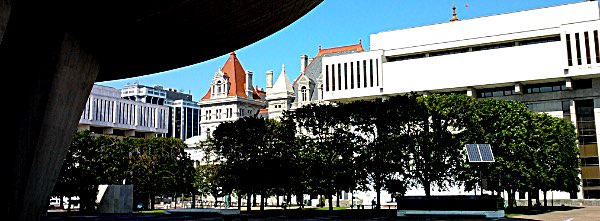- By New York State Comptroller's Office
- Business & Technology
 Print
Print 
"COVID-19 had a significant negative effect on the first half of the state's fiscal year," DiNapoli said. "The pandemic has created a profound degree of uncertainty, but one thing is clear – Washington must get its act together and help states and local governments weather this economic storm. The state Division of the Budget's mid-year Financial Plan update and the official start of next year's budget process in early November will provide a clearer picture for policymakers as they prepare to address our budget shortfall."
State tax revenues totaled $8.8 billion in September, $922.3 million higher than the latest projections by the state Division of the Budget (DOB). Total tax revenues in September were a net $364.1 million higher than those in 2019, primarily due to a $440 million increase in personal income tax collections resulting partly from an additional day in September of withholding collections and lower refunds.
September sales tax revenues were down from 2019 by $88 million. That drop of 5.4 percent was the lowest monthly decline for sales tax since the fiscal year began in April. However, year-to-date sales tax collections are still 17.2 percent lower than the same period last year.
Federal revenues through September totaled $42.7 billion, up by $10.7 billion from the same period a year earlier. Among the reasons for the increase is the $5.1 billion the state has received from the federal Coronavirus Relief Fund. While the U.S. Treasury Department has provided greater flexibility for state and local governments' use of those resources in recent weeks, the extent to which such aid may offset declining state revenues remains unclear. In addition, federal Medicaid matching funding has been temporarily increased, and the state received $3.8 billion in funding for the federal Lost Wages Supplemental Payment Assistance program that was not part of collections last year.
In State Operating Funds (not including federal or capital), spending through the first six months totaled $44.7 billion, $4.3 billion, or 8.8 percent lower than last year. This was $681.7 million higher than anticipated in the Financial Plan, primarily due to local assistance grants in September.
As of Sept. 30, the General Fund held a balance of $15.4 billion, $1.6 billion higher than projected, and $6.4 billion higher than last year at the same time. The higher balance is driven partly by $4.4 billion in short-term borrowing that DOB anticipates repaying before the end of the fiscal year, as well as higher than projected tax receipts.
The "Quick Start" budget process framed in New York's State Finance Law requires representatives of the governor, legislative leaders and the comptroller to meet annually before Nov. 15 to jointly review available financial information to help with timely adoption of a budget for the next fiscal year. They are also required to report on estimated state receipts and disbursements for the current and ensuing fiscal years by Nov. 5.
v16i42




